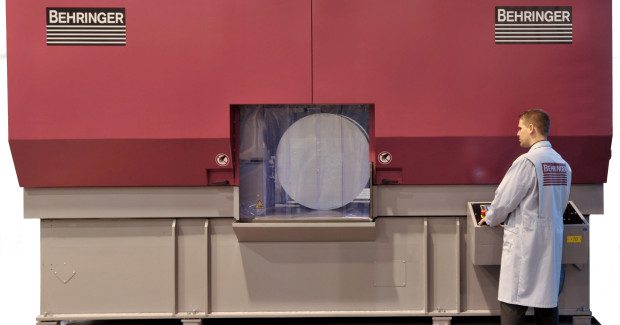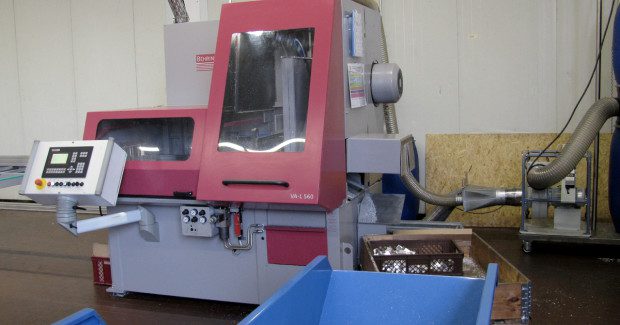Sorting Out Aluminum Sawing
When choosing the best saw for cutting aluminum it’s important to consider your application. While both circular and band saw methods can effectively cut aluminum, it pays to weigh all of these factors before deciding which saw is best for your operation.
Posted: March 1, 2016
In the fabrication industry, lightweighting has been a primary focus in the automotive sector to produce a final product that is as fuel efficient as possible. With research and development constantly enhancing the mechanical properties of aluminum alloys to produce the best possible strength-to-weight ratio, it’s easy to see why aluminum has become a go-to alloy in vehicle construction. Beyond its lighter weight, which can enhance fuel efficiency and performance capabilities, aluminum is also easily recyclable and in the automotive industry, it can improve safety by absorbing more crash energy than steel.
With the growing demand for aluminum parts in automotive and aerospace, metal fabricators are investigating how to best process aluminum alloys. After aluminum is forged, cutting is one of the first stages done for fabrication. One important aspect to consider is cutting methodology. While aluminum is lightweight and comparatively easier to cut than exotic alloys, it still presents its share of challenges, such as gumminess, chip packing and deburring. However, with the right equipment, aluminum can be very efficiently sawn via two methods: circular sawing or band sawing.
CIRCULAR SAWING
Generally, one of the most accurate and fastest sawing methods for cutting aluminum alloys is with the carbide circular cold saw. Since aluminum is a lighter material it makes sense to cut it with higher speeds and feeds and circular saws cut very fast. In addition, a circular saw blade has to be more than twice the diameter of the part being cut. The larger, heavier blade often requires a larger saw and footprint. Thus to no surprise, the circular saw is a relatively expensive capital investment, and the blades are more expensive than band saw blades. The ability to turn the blade at such a high rpm also requires a robust and stable saw, built and designed specifically for such an application.
The speed at which the circular cold saw can produce finished products also lends itself well to the integration of a material handling solution, to keep pace with the cutting production. Depending on many factors, including the size, grade, and length of cut, it may take only seconds to minutes to completely cut up a 20 ft aluminum billet. The operator then has to remove the finished parts and load a new bar, leaving the saw idle in the process. Integrating a flat or incline magazine that allows the operator to load multiple bars at a time, enabling the saw to run non-stop for many hours, dramatically increases productivity and minimizes non production time. Material handling is also very helpful with product output, since aluminum is a softer alloy and is more vulnerable to dings and dents. Therefore the removal and transportation of finished product is also important.
BAND SAWING
Recent advancements in band saw technology and their ability to run blades at high surface feet per minute (sfm) has allowed band saws to also make quick work of aluminum alloys. Historically, band saws couldn’t generate enough band speed without complications that led to blade damage and scrapped parts. Years of research and development have resulted in band saws that can now reach over 4,000 sfm, with the stability and blade tracking necessary to cut efficiently through aluminum. This is good news for aluminum fabricators because not only is the blade itself less expensive than a carbide circular blade, but the price to capacity range is so much more diverse than that of a circular cold saw.
The most critical part of cutting aluminum is during the entry and exit of the material, where the possibility of blade damage is the greatest. But today’s band saws now allow the operator to program ramp feed and speed, which allows the blade to enter the cut slowly, ramp up speed, and then slow again as it exits the cut. This type of control greatly reduces or eliminates the possibility of blade damage. Some band saws also feature a servo-driven precision downfeed control that automatically adjusts to blade pressure, creating an optimal balance of feed rate and pressure for improved quality and cutting rates. The downfeed power/saw blade pressure is monitored by a cutting pressure sensing system to assure an optimum balance between blade feed and pressure. Operators can therefore maximize material feed rates without concern of overloading the blade. Also, an electrically powered ball screw-driven material feed gripper eliminates backlash and ensures precise material positioning for improved length accuracy.
Further advancements in blade designs have also allowed band saws to become a viable cutting option for aluminum fabrication. Traditionally, bi-metal band saw blades typically used with band saws had a rake set that left “shadow” lines or material build up on the part. However, band saw blades are now available with carbide tipped teeth, special coatings and tooth designs that produce an exceptional cut with a clean, flat, smooth surface. Band saws also offer another important advantage: less material loss. Band saw blades produce a kerf that is generally one third to half as thick as a kerf produced by circular saw blades. The thinner kerf produced by a band saw blade minimizes material loss and enables a higher yield of finished pieces per unit of stock.
CHOOSE CAREFULLY
When choosing the best saw for cutting aluminum it’s important to consider your application. If you are running high-volume jobs of over 5,000 parts per shift and cutting aluminum between .5 in and 6 in diameter, and require the best possible finish, a circular saw may be the best option. For lower-volume fabricators that cut a variety of other materials, a band saw for high-speed cutting of aluminum stock over 6 in diameter might be the better solution. But regardless of which method a fabricator uses, it is critical to invest in a saw that is well made, has a cast iron frame and components for rigidity and vibration dampening and the necessary speed, controls and material handling options to process aluminum. While both circular and band saw methods are effective for cutting aluminum, it pays to weigh all the factors before deciding which saw is best for your operation.






